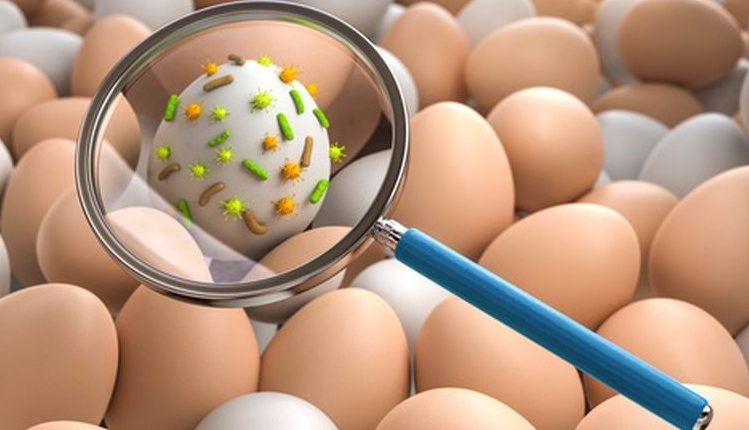
Salmonellosis: symptoms, diagnosis and treatment
Salmonellosis is one of a group of infectious diseases caused by bacteria belonging to the salmonella family (excluding Salmonella Typhi, which causes typhoid fever)
Salmonella is a gram-negative, aerobic, motile, rod-shaped bacillus
Salmonella is present in the gastrointestinal tract of many animals (insects, reptiles, birds and mammals) and is excreted with faeces.
The disease is transmitted by ingestion of contaminated food (meat, eggs or pre-cooked food) or by direct contact with a sick person or carrier (e.g. in a hospital environment, especially in the wards of premature babies and paediatric wards).
Reservoirs of infection can also be animals. Often, it is these animals that spread the infection from one country to another through the import of infected animals, animal products or meat meal feed.
Signs and symptoms of salmonellosis
Salmonellosis manifests itself as acute gastroenteritis, with diarrhoea, vomiting, fever, abdominal pain: it only has a severe course in infants, for whom it can even be fatal.
The incubation period is 12-48 hours, while the contagiousness period is extremely variable (from several days to several weeks).
Diarrhoea (understood as more than three liquid or semi-liquid discharges per day), abdominal pain and in cases of a certain severity fever (38-39 degrees), nausea and vomiting, dehydration (in debilitated individuals and children), are the main symptoms, which usually appear after ingestion of the contaminated food.
Prevention and treatment of salmonellosis
Treatment is antibiotic in the case of salmonellosis.
There is currently no vaccine available against salmonellosis, so compliance with common hygiene rules and proper personal hygiene after defecation is essential.
It is also advisable to avoid ingesting potentially infected foods such as:
raw or partially cooked eggs and egg preparations (cream cakes, mayonnaise and ice cream), broken or dirty eggs
raw or incompletely cooked fish and seafood;
meat and meat products, poultry and poultry products if not cooked;
fruit and vegetables that have not been washed thoroughly;
unpasteurised raw milk and milk derivatives (ice cream and dairy products);
ice made with unsafe water.
In addition, it is important to avoid contact between different kinds of food and to pay attention to the cleanliness of work surfaces and food preparation.
Read Also:
Emergency Live Even More…Live: Download The New Free App Of Your Newspaper For IOS And Android
FDA Warns On Methanol Contamination Using Hand Sanitizers And Expands The List Of Poisonous Products
Getting To Know Salmonella: What Causes Salmonellosis?
First Aid In Case Of Food Poisoning



